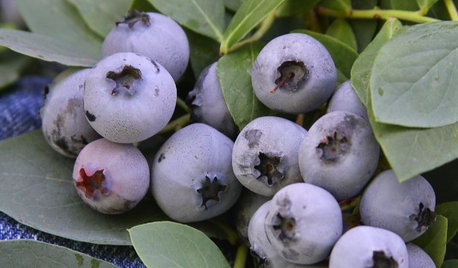Blacktail Mountain Watermelon, ripe?
suellen45
16 years ago
Featured Answer
Sort by:Oldest
Comments (18)
rodger
16 years agoRelated Discussions
Blacktail mountain watermelon seeds
Comments (1)I have Blacktail Mountain Watermelon seeds that I grew when I was a member of Seed Saver's Exchange. They are at least 5 years old, but have been stored in the dark in sealed plastic bags. I'd be happy to send them to you for nothing. I don't have enough sun in my yard to grow watermelons any more. Just e-mail me your address and I'll send you a pile of them. They are delicious and short season. Martha...See Morewant luffa,tigermelon,blacktail moutain watermelon,have heirlooms
Comments (1)have luffa and tiggermelon! would like pink banana and jarrendale blue pumpkin...See MoreWanetd - Blacktail Mountain
Comments (1)I have them, if you are interested. Let me know....See MoreHow do I know Moon and Stars is Ripe First time Watermelon grower
Comments (1)Take a look over on the Vegetables forum. There are some folk giving really good advice on this very question. I'm growing this one, and have for some years, but I have to admit that the ones giving advice over there know this subject better than do I. George in Tahlequah, OK -- who recently openned up a half-ripe Moon & Stars watermelon!...See Moresuellen45
16 years agorodger
16 years agomurkwell
16 years agoaka_peggy
16 years agorodger
16 years agojimster
16 years agovgkg Z-7 Va
16 years agosuellen45
16 years agovgkg Z-7 Va
16 years agofranktank232
16 years agowayne_5 zone 6a Central Indiana
16 years agojimster
16 years agorodger
16 years agowayne_5 zone 6a Central Indiana
16 years agorodger
16 years agoc_steele
12 years ago
Related Stories

SUMMER GARDENINGHouzz Call: Please Show Us Your Summer Garden!
Share pictures of your home and yard this summer — we’d love to feature them in an upcoming story
Full Story
GARDENING GUIDES15 Favorites for Your Summer Edible Garden
Get your summer garden off to a good start with these popular fruits and vegetables
Full Story
EDIBLE GARDENSHow to Grow Your Own Sweet Summer Crops
This guide will help any gardener get started on growing the freshest warm-season veggies and berries for summer
Full Story



Violet_Z6